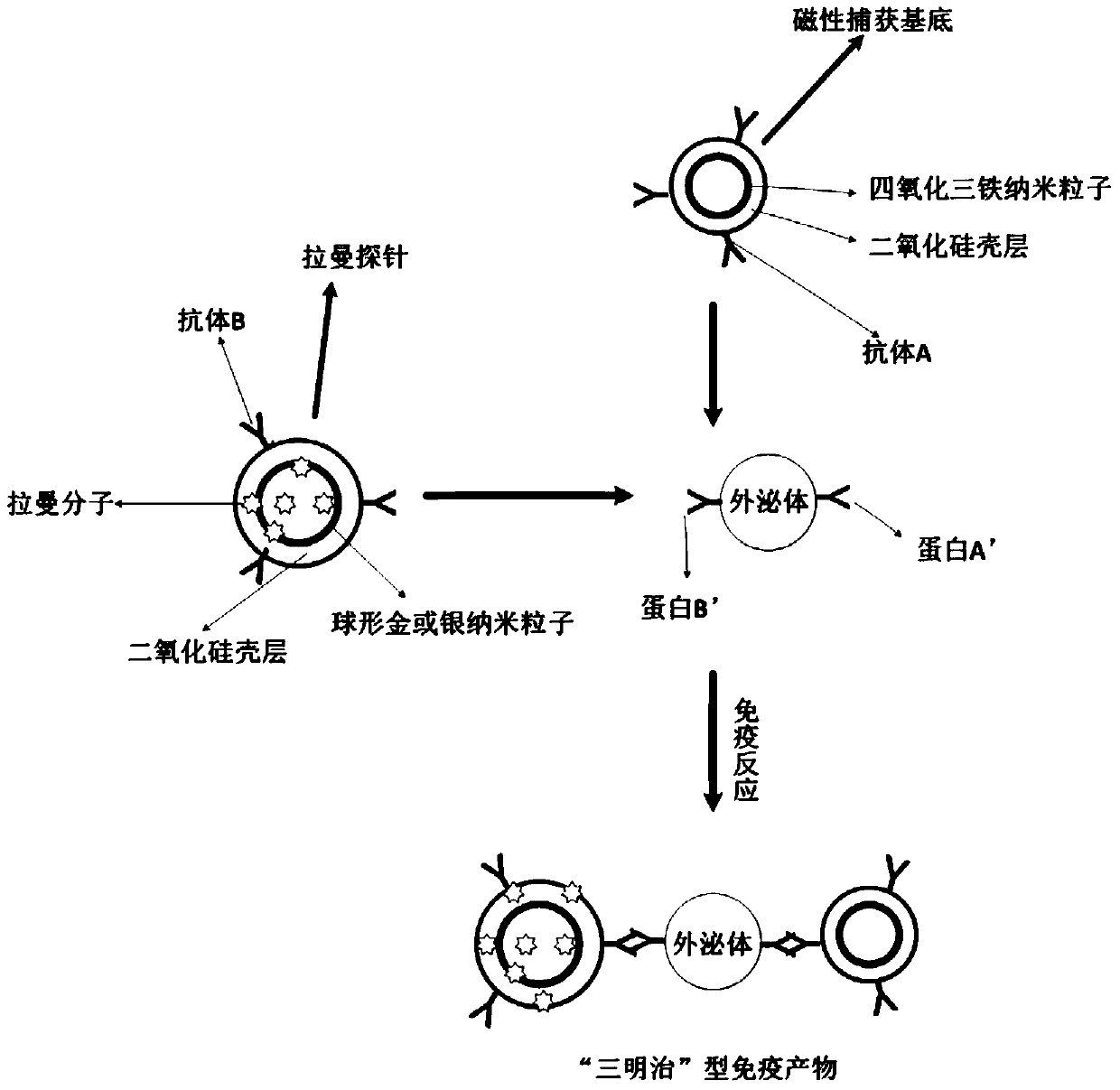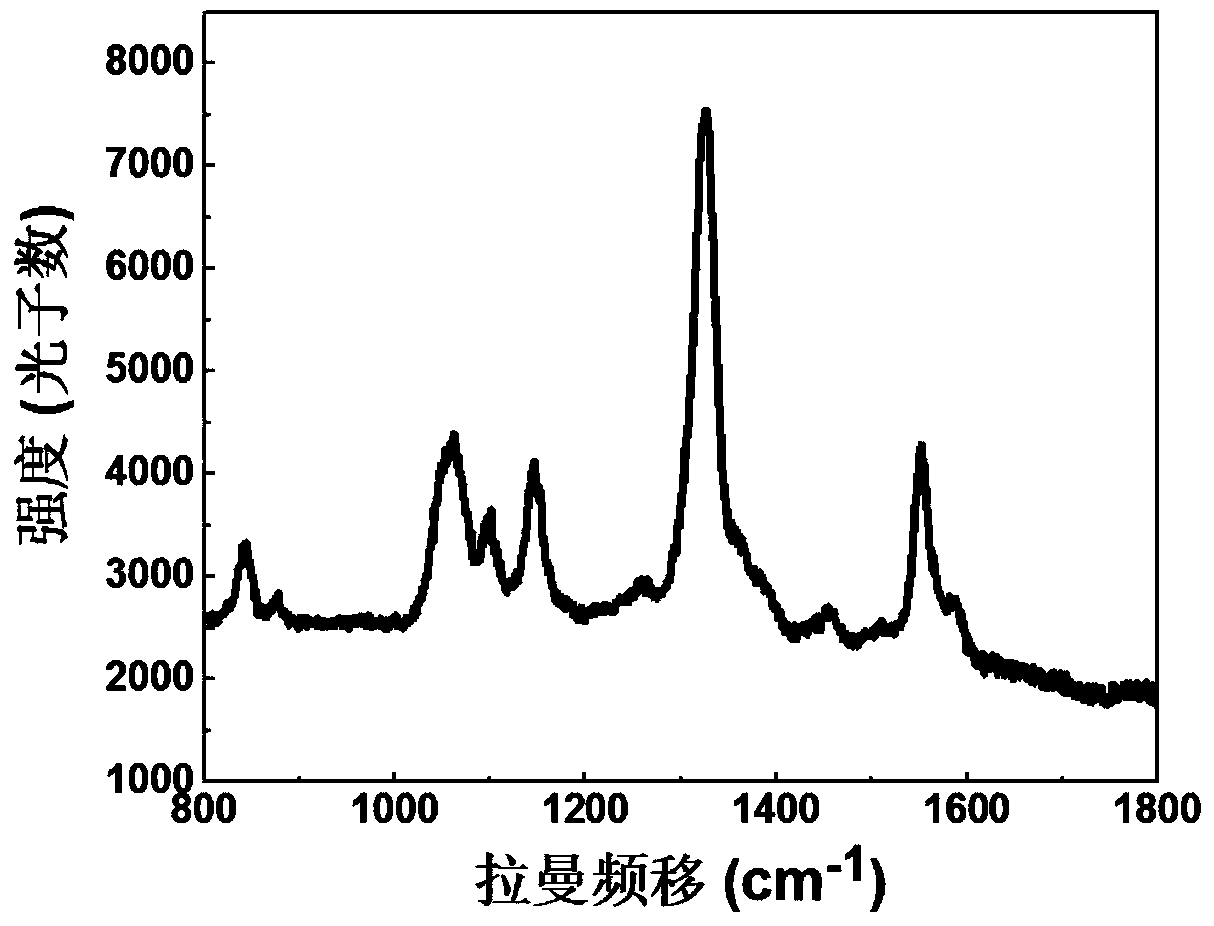A method for rapid detection of exosomes by SERS signaling
A technology of exosomes and signals, which is applied in the field of rapid detection of exosomes, can solve the problems of complex sample processing and time-consuming detection process, and achieve the effects of sensitive quantitative detection, improved reliability, and simplified steps
- Summary
- Abstract
- Description
- Claims
- Application Information
AI Technical Summary
Problems solved by technology
Method used
Image
Examples
Embodiment Construction
[0015] The present invention will be further described below in conjunction with the accompanying drawings. The PBS buffer solution involved in the examples has a pH of 7.4 and a concentration of 10 mM.
[0016] With 5,5-dithiobis(2-nitrobenzoic acid) (DTNB) as the Raman molecule and the exosomes of human cervical cancer cells (HeLa) as the exosomes to be tested, the method of the present invention is used Exosome detection experiments were carried out.
[0017] Step 1, preparation of iron ferric oxide nanoparticles
[0018] Ferric oxide nanoparticles were prepared by solvothermal method. Add 2.7g ferric chloride hexahydrate (FeCl 3 ·6H 2 (2), 1g polyethylene glycol (PEG, molecular weight 200) and 3.6g sodium acetate, stir half an hour to make it fully mix. Subsequently, the mixed solution was charged into a polytetrafluoroethylene reactor at 200° C. for 8 hours. The product is magnetically separated and washed repeatedly with deionized water to obtain ferric chloride nan...
PUM
| Property | Measurement | Unit |
|---|---|---|
| diameter | aaaaa | aaaaa |
Abstract
Description
Claims
Application Information
 Login to View More
Login to View More - R&D
- Intellectual Property
- Life Sciences
- Materials
- Tech Scout
- Unparalleled Data Quality
- Higher Quality Content
- 60% Fewer Hallucinations
Browse by: Latest US Patents, China's latest patents, Technical Efficacy Thesaurus, Application Domain, Technology Topic, Popular Technical Reports.
© 2025 PatSnap. All rights reserved.Legal|Privacy policy|Modern Slavery Act Transparency Statement|Sitemap|About US| Contact US: help@patsnap.com


